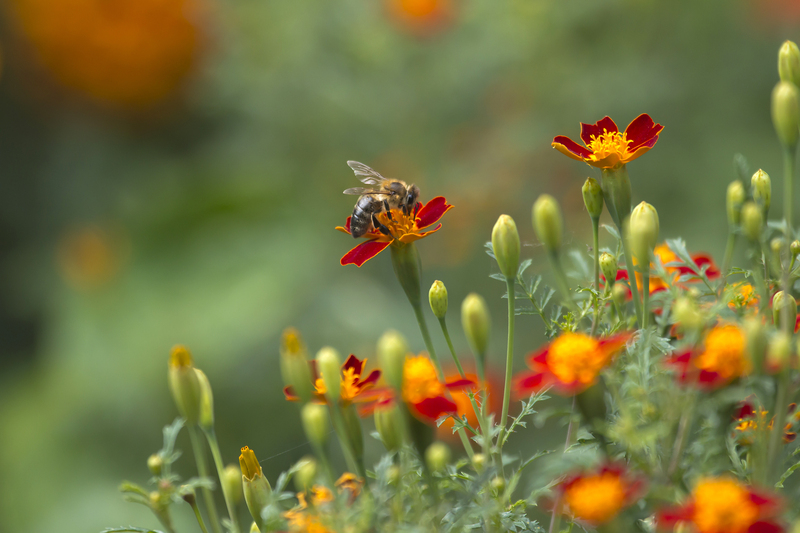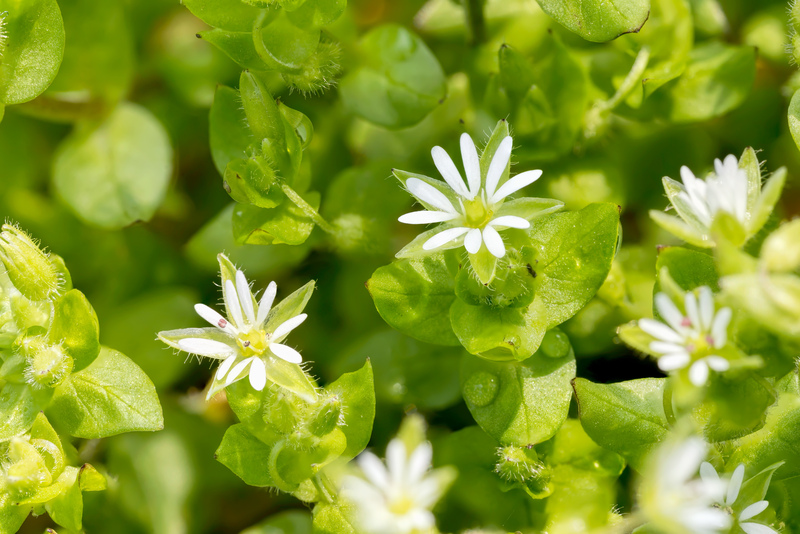Transforming Your Yard for Pooch and Plants
Posted on 25/06/2025
An inviting backyard is the heart of a home, offering a place for relaxation, connection with nature, and that all-important play area for both pets and plants. As a homeowner or renter with a love for dogs and gardening, you may wonder how to create a functional yard that is both safe for your pooch and nurturing for your beloved green friends. In this comprehensive, SEO-optimized guide, we'll dive into smart landscaping, resilient plant choices, pet-friendly lawn care, and more--making your dream dog-and-plant paradise a reality.
Why Bother Transforming Your Yard for Pets and Plants?
Creating a harmonious outdoor environment benefits the entire household:
- Happy, healthy pets: Dogs get stimulation, exercise, and a safe place to play.
- Beautiful gardens: Plants can thrive without being trampled or nibbled on.
- Value boost: A pet-friendly, landscaped yard adds curb appeal and property value.
- Stress reduction: Nature and animals both have proven stress-relieving benefits!

Step 1: Planning Your Dual-Purpose Yard
The key to successful dog- and plant-friendly landscaping lies in good planning. Consider your dog's breed and temperament, the size of your yard, sun exposure, and your personal gardening goals.
Evaluate Your Space
- Where does your dog currently run, dig, or lounge? Identify paths or favorite hangout spots.
- What sun and shade patterns affect plant placement?
- Are there any safety concerns, such as toxic plants, uncovered pools, or sharp fences?
Designate Pet Zones and Plant Zones
A successful transformation means defining clear boundaries:
- Dog play areas: Open, hardy surfaces for zoomies and chase games.
- Rest spots: Shady or sunny zones for lounging.
- Garden beds: Raised or enclosed plots to protect delicate plants.
- Potty spots: Easy-to-clean, well-drained areas for waste.
Pro tip: Use paving stones, low fencing, or decorative borders to visually separate spaces for paws and petals!
Step 2: Choosing the Best Dog-Friendly Landscaping Solutions
Balancing pet-friendly landscaping and plant protection can seem tricky. Here are resilient, attractive solutions for peace between pups and petunias:
Sturdy Lawn Alternatives
- Clover lawns: More resilient to dog urine, soft underfoot, and drought-tolerant.
- Artificial turf: No digging, no mud, low maintenance (but can get hot in sun).
- Mulch: Use natural cedar or pine mulch; avoid cocoa mulch, which is toxic to dogs.
Dog Paths and Dig Zones
Dogs often create paths with their routines. Let them guide your landscaping:
- Flagstone or gravel paths: Direct traffic and reduce worn patches of grass.
- Designated digging areas: Set aside a sandpit or loose dirt box to encourage "authorised" digging.
Shady Retreats and Water Features
- Add a canopy, pergola, or large planter trees for canine comfort during hot months.
- Install a dog-friendly water bowl, fountain, or small pond (with shallow edges) for hydration and play.
Step 3: Picking Pup-Approved, Hardy Plants
Not all plants stand up to canine curiosity or are safe for your furry friends. Here's how to select the best dog-safe plants:
Choose Tough, Non-Toxic Varieties
- Herbs and Edibles: Basil, thyme, parsley, and rosemary are non-toxic and great for culinary gardens.
- Ornamental Shrubs: Camellia, magnolia, and bottlebrush are durable and safe for dogs.
- Groundcovers: Elfin thyme, creeping Jenny, and Irish moss handle foot traffic and aren't dangerous if nibbled.
- Grass Alternatives: Buffalo grass, Kentucky bluegrass, and zoysia are more pee-tolerant and resilient.
Remember: Lilies, sago palm, foxglove, and azaleas are toxic for dogs. Always check the ASPCA's toxic plants list if unsure.
Use Raised Beds and Container Gardens
Get your flowers and veggies out of paw's reach with:
- Sturdy raised beds with safe, chew-proof borders.
- Heavy ceramic or large plastic pots that can't be tipped over.
Step 4: Creating Safe Boundaries for Plants and Pooch
Protecting your garden doesn't mean blocking out your dog completely--it's about smart boundaries:
- Low decorative fences: Attractive and serve as gentle reminders for curious dogs.
- Natural borders: Use rock walls, logs, or dense shrubs for separation with style.
- Chicken wire or mesh: Invisible to dogs but deters digging and trampling in key areas.
Fence in the Whole Yard
If your budget and space allow, a dog-secure fence ensures full peace of mind. Choose fences that are:
- At least 4 feet high for most breeds, 6 feet for agile jumpers.
- Without gaps or sharp points.
- Buried 6-12 inches below ground to prevent digging escapes.
Step 5: Pet-Friendly Lawn Care and Maintenance
Even the most beautifully landscaped dog yard with plants can suffer without pet-safe, mindful care:
Non-Toxic Lawn Products
- Natural fertilizers: Compost, fish emulsion, or kelp--skip chemicals and synthetic weed killers.
- Pet-safe pest control: Neem oil, beneficial bugs, or diatomaceous earth for the garden.
- Organic mulch: Shredded bark, straw, or untreated wood chips (avoid dyed or cocoa mulch).
Repairing "Dog Spots" on Lawns
- Flush urine spots with water right away to dilute the effect.
- Overseed with tougher grasses and patch-heal with compost.
- Rotate daily potty locations if possible.
Establishing Routines
Train your dog to use paths and potty spots with consistency, treats, and gentle redirection. The more predictable your dog's patterns, the less wear on your prized plants!
Must-Have Features for the Ultimate Dog and Plant Backyard
- Agility equipment or tunnels for active breeds.
- Comfy dog beds or hammocks in the shade.
- Vertical gardens or hanging baskets to maximize planting and minimize paw access.
- Self-closing gates and escape-proof latches for safety.
- Pet-safe outdoor lighting for nighttime play.
- Compost bins with secure lids--great for garden waste, but keep them pet-proof!
Creative Landscaping Ideas: Dog-Friendly Yards in Action
Need some inspiration? Here are real-world landscaping designs that blend dog yards and lush gardens seamlessly:
- Meandering dog trails surrounded by wildflower meadows--perfect for exploring and pollinators alike.
- Container herb spirals on a sunny patio, raised above sniffing snouts.
- A Zen garden with raked gravel, sculptural stones, and a small, filtered canine pool.
- Xeriscape areas of drought-resistant succulents protected by driftwood log barriers.
- "Living fences" using safe shrubs or tall non-toxic grasses for natural screening and privacy.
Common Mistakes to Avoid When Creating a Dog and Plant Paradise
- Ignoring toxic plants: Double-check every new plant purchase for pet safety.
- Overlooking diggers: Some breeds will dig up beds no matter what! Install hidden wire mesh if needed.
- Neglecting shade and water: Dogs can overheat quickly--plan for comfort as much as aesthetics.
- Forgetting routine yard checks: Remove any plant debris, mushrooms, or sharp objects regularly.
The Environmental Benefits of a Dog- and Plant-Friendly Yard
You're not just making your home prettier! Eco-friendly dog landscaping supports biodiversity, reduces chemical runoff, sequesters carbon, and provides pollinator habitats--all while keeping pets safer and happier.
- Native gardens attract butterflies and bees without exposing dogs to pesticides.
- Drought-tolerant plants save water--a win for the wallet and the planet.
- Compost piles recycle waste, enriching soil and reducing trips to the landfill.

Frequently Asked Questions (FAQ)
- Q: What's the best ground cover for dogs and plants?
A: Clover, buffalo grass, and creeping thyme are top picks for durability, looks, and pet safety. - Q: How do I keep my dog out of the garden bed?
A: Use raised beds, physical barriers, and consistent positive training--never scold, just redirect and reward. - Q: Are there low-maintenance options?
A: Yes! Choose native plants, mulch heavily, and opt for perennial shrubs to reduce weeding and watering chores. - Q: Can I still have a vegetable garden?
A: Absolutely. Use fences or taller beds to keep produce safe from paws and mouths.
Final Thoughts: Your New Outdoor Haven Awaits
Transforming your yard for pooch and plants doesn't require endless time or money--just thoughtful planning and a little creativity. By prioritizing pet safety, tough plant choices, smart garden design, and regular maintenance, you'll nurture a backyard oasis where tails wag and flowers bloom in harmony.
Ready to dig in? Start with a plan, set clear zones, go organic, and celebrate your unique pup-and-plant paradise!
Want More Tips?
Sign up for our newsletter and receive monthly dog- and plant-friendly landscaping ideas, care guides, and seasonal inspiration straight to your inbox!
Share Your Success Story!
Have you created the perfect outside environment for both your plants and your four-legged friend? Send us your photos and tips. We'd love to feature your beautiful dog and garden yard transformation!

